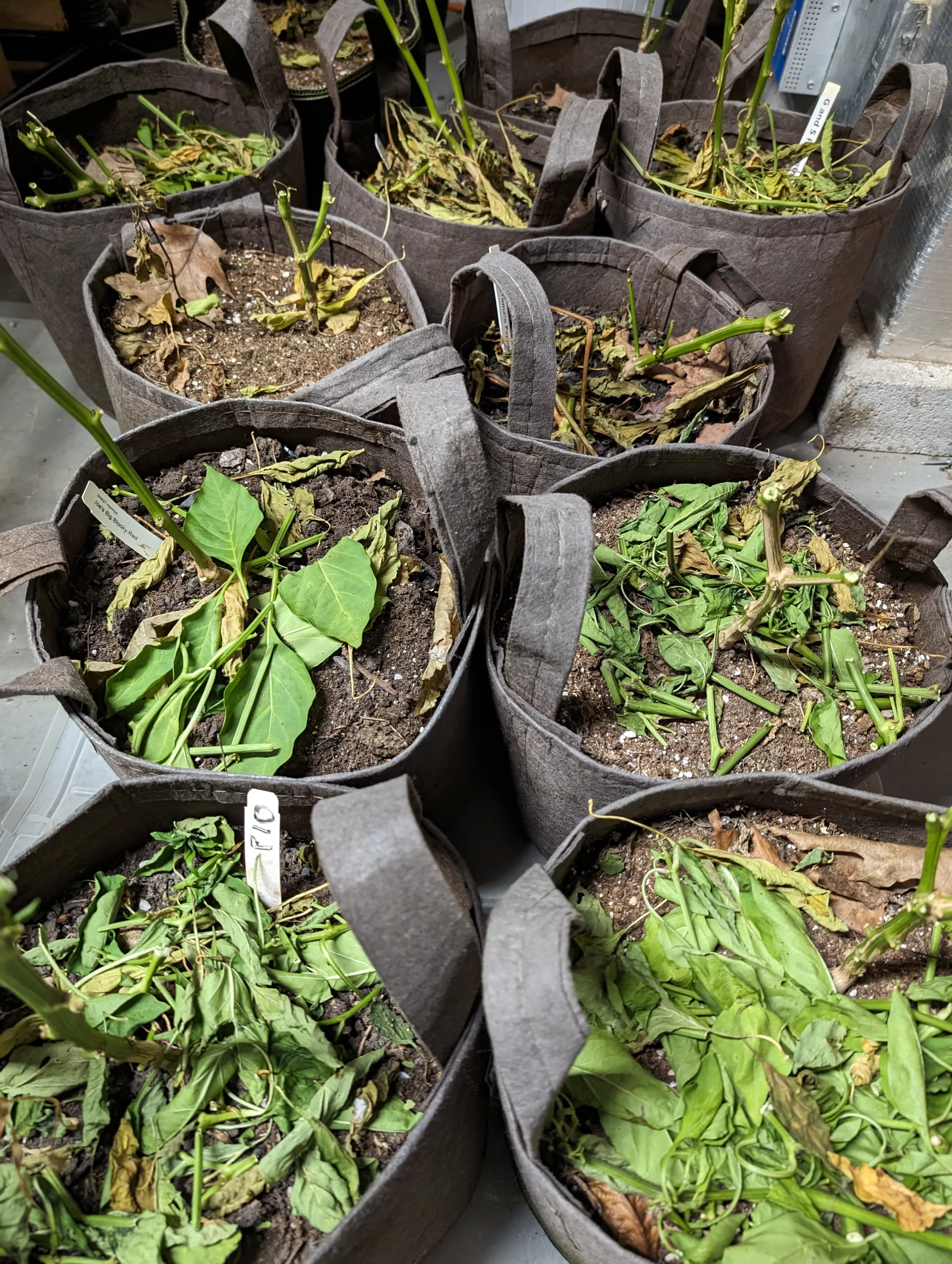People are often surprised when I tell them that I have pepper plants that are a decade old. This is because I’ve been overwintering pepper plants for several years. Following this overwintering procedure makes the most of your harvest and allows you to get a jump start in subsequent seasons.
Why Overwinter?
So why overwinter pepper plants?
I enjoy peppers. When I say “pepper”, I’m mostly talking about those insanely hot and flavorful varieties. These are the types that you usually can’t just pick up at your local garden center. Even finding the seeds for them sometimes requires a lot of searching, expense, etc. Once you start growing them, these varieties of peppers grown from seed rarely have a chance to produce prolific fruit in my growing season. I tried this early on, and mostly just got frustrated when I went to all this trouble to get no or minimal fruit. My overwintering process initially started as a way to prolong that harvest time. It eventually morphed into having the long lived pepper plants that I do now. These plants don’t need to do all of the early growth that first season plants do and end up producing fruit earlier in the season due to this.
Starting Peppers From Seed
Starting the types of peppers that I enjoy from seed is often a tricky process. I won’t necessarily go into detail here as I’ve found that each variety seems to differ slightly in what works best. Almost all of them though require some form of warmth during the germination process. I’ve written before about my indoor seed starting and growing setup. When I’m starting peppers from seed, they go through the full lifecycle described in this post. This tends to be the most difficult part of the process. When this is successful, I want to make the most of it.
Growing in Containers
Many people who overwinter peppers will actually dig them up before bringing them inside. For the most part, I’ve opted to grow them in containers. Growing in containers makes it easy to eventually move them inside. There are other benefits as well. You can move the containers around your yard. I do this for several reasons. You can optimize their sun exposure and move them out of rain (peppers hate being overwatered). I’ve also been using it as a means to get them out of the way of pests.
The Overwintering Process
The overwintering process is fairly easy. If you don’t already plant in containers, you’ll have an extra step. Get ready to dig up your plants and then transfer them into containers. Beginning this process usually signifies the end of my gardening season as it typically is one of the last things I do.
When to Start
I start to think about the overwintering process when night time temps start to consistently dip below 50 degrees Fahrenheit. Whatever you do, you want to make sure that your plants are inside before there is any threat of freezing. Before bringing your plants inside, you want to blast them with a high powered stream of water. This removes any pests that might be hanging on. This is one of the biggest issues that you’re likely to encounter during this process. If I see evidence of pests, sometimes I’ll spray with an insecticidal soap solution and then follow that with another high powered water stream.
Bring Indoors
At this point, you can bring the containers inside. Usually, many will still have fruit and flowers. Unless you have a serious indoor gardening setup, there’s little hope that those flowers will mature into fruit. It’s best to remove all of the flowers. If you have the space, you can put them in a warm, lighted spot until you harvest the remaining fruit. After this occurs, you can move on to the next step.
Induce Dormancy
At this point, we want to coax the pepper plants into going dormant. This makes it much easier to overwinter them. When this occurs, they won’t but any energy into growing or flowering. I do this by cutting all of the leaves and most of the stems off of the plants. These pruning shears are my favorite way to make clean cuts. I usually cut them down so that there are no more than 3 or 4 ‘stems’ above the first branch point. I cut all of these back just above the first branch node above the first branch point. Now you can do another check for any pests and deal with them if necessary.
The final step in inducing dormancy is to move the containers to an unheated garage or another spot that maintains a temperature around 50 degrees Fahrenheit. You don’t really need direct light here.
Overwinter
Congratulations! You’re successfully overwintering peppers. At this point, you can mostly forget about them until Spring. Check on them every week or two to make sure nothing weird is occurring. You should water them lightly once or twice a month.
Spring Revival
Shortly after your last frost, you need to bring the plants out of dormancy. You initiate this by moving the containers some place warmer that gets more light. If you have a dedicated indoor gardening space, that’s great. If not, move them to a south facing window and keep them warm. At this point, you can also start watering them more frequently. It’s also a great idea to fertilize them using your method of choice. Once you start to see signs of new growth, you can begin to put them outside for a bit each day to harden them off. When night time temps are consistently above 50 degrees Fahrenheit and you’ve hardened them off, it’s time to move them outside permanently.
Conclusion
Are you overwintering pepper plants? If not, what’s holding you back? What tricks and tips do you have to make this process most effective? Drop me a line and let me know!


Leave a Reply